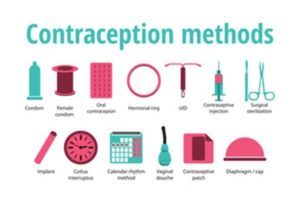Thanks to modern advances and research, there are now more options than ever for contraception. No longer are they just for preventing pregnancy. They can reduce PMS symptoms, help you have easier periods, and more. Gone are the days of the one-size-fits-all approach. Now, women also have the flexibility of choosing a birth control that fits their lifestyle. Let’s look into two options: the contraceptive patch and the IUD.
Convenience, Longevity, and Effectiveness of the Patch Vs. IUD
The contraceptive patch and IUD are on opposite ends of the spectrum regarding the type of birth control options available. An intrauterine device (IUD) is a long-acting reversible type of contraception. This means it lasts for years and can be taken out any time before the allotted time. Some brands last for 3-7 years, while the copper IUD (ParaGard) lasts up to 10. The IUD is one of the most effective types of birth control on the market. The IUD is truly set-it-and-forget-it.

The contraceptive patch is worn on the skin of your belly, buttocks, or back. The Xulane patch can also be worn on the upper outer arm. For the first 3 weeks, you change it once a week (every 7 days). For the 4th week, you do not wear a patch at all, and that’s when your period will come. After 7 patch-free days, you will start a new pack of patches (3 per pack). The patch is still very effective at preventing pregnancy, but improper use like forgetting to change it on time can affect that significantly. On average, 9 out of 100 patch users get pregnant every year.
Different Lifestyles, Similar Benefits
IUDs and the patch work in different ways to prevent pregnancy. The patch uses hormones to:
- Change how the sperm cells move by thickening the mucus around the cervix and
- Stopping the ovaries from releasing eggs.
IUDs:
- Can thicken cervical mucus, which makes it harder for sperm to enter the uterus
- Create inflammation that cause a toxic environment for sperm.
IUDs and the patch can also help make your periods better, and you can get pregnant right away once you stop or remove them. The copper IUD doesn’t contain hormones, so it’s perfect for those who can’t take hormones. Finally, Paragard IUDs are the most effective form of emergency contraception if you get one within 120 hours (5 days) of having unprotected sex. It’s over 99% effective against pregnancy.
Interested in the Contraceptive Patch or IUD? Enrolling Studies May be an Option!

Are you thinking about trying the patch or an IUD but don’t know where to start? Clinical research studies are enrolling here at Seattle Clinical Research Center, which may help! Participating in birth control research studies is a great way to try specific methods you’ve been curious about or may not have access to otherwise. All while helping advance contraceptive options for future generations.

Want to learn more about our patch, pill, IUD, and implant birth control studies? Call us at (206) 522-3330 or visit our website today!
Sources:
https://www.plannedparenthood.org/learn/birth-control/iud/what-are-the-benefits-of-iuds

